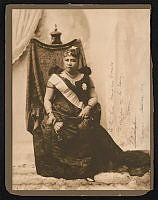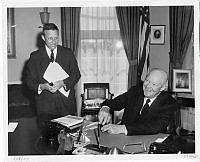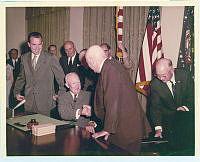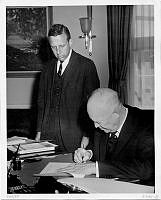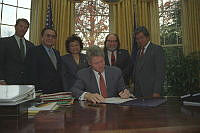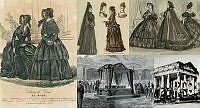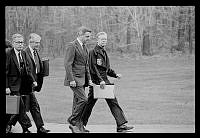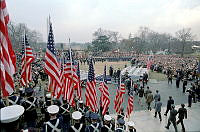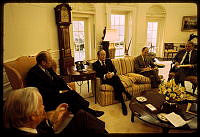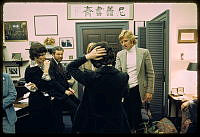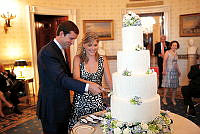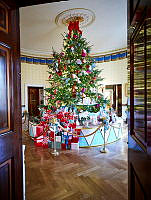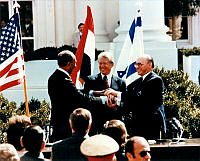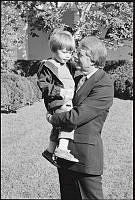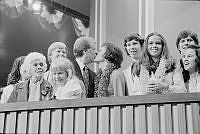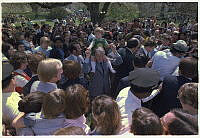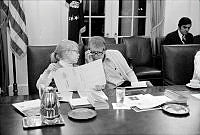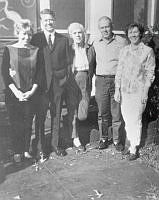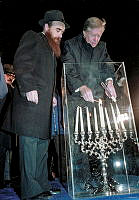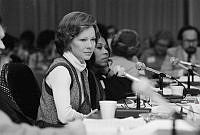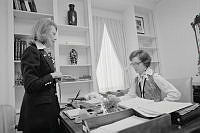White House Decorative Arts in the 1800s
Copyright © White House Historical Association. All rights reserved under international copyright conventions. No part of this article may be reproduced or utilized in any form or by any means, electronic or mechanical, including photocopying, recording, or by any information storage and retrieval system, without permission in writing from the publisher. Requests for reprint permissions should be addressed to books@whha.org
John Adams spent the majority of his presidency in Philadelphia, but later occupied the President's House in Washington, D.C., which officially became the new federal city in December 1800. About a month beforehand, President Adams moved into the Executive Mansion on November 1. The house was unfinished, yet habitable, and the president and First Lady Abigail Adams made six rooms comfortable, and had others prepared for official entertaining using furniture shipped from Philadelphia. Congress purchased a full-length portrait of George Washington for $800, the only object remaining in the White House from the Adams administration.
Thomas Jefferson succeeded Adams and moved into a home that was still unfinished. Jefferson spent the majority of a $25,000 appropriation on structural improvements to make the house habitable and purchased items that were utilitarian in nature: crockery ware, kitchen furniture, floor cloths, and window blinds.

Soup Tureen & Stand, Preserves Stand. Royal Porcelain Manufactory of Sèvres, France, 1782. John and Abigail Adams may have acquired this family service for official entertaining while he was American minister to France in 1785.













